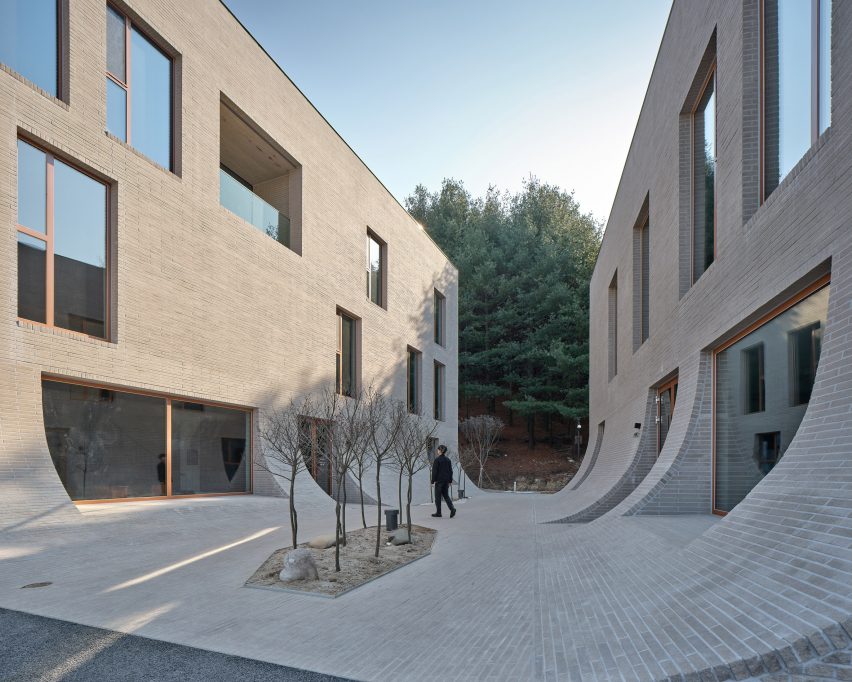Architecture studio Nameless Architecture has completed the Café Teri bakery in Daejeon, South Korea, in a pair of buildings that flow into a central courtyard.
Located at the foot of the Gyeryongsan Mountain in Daejeon, Nameless Architecture designed the two buildings to frame the entrance to a hiking trail that continues up the mountain.
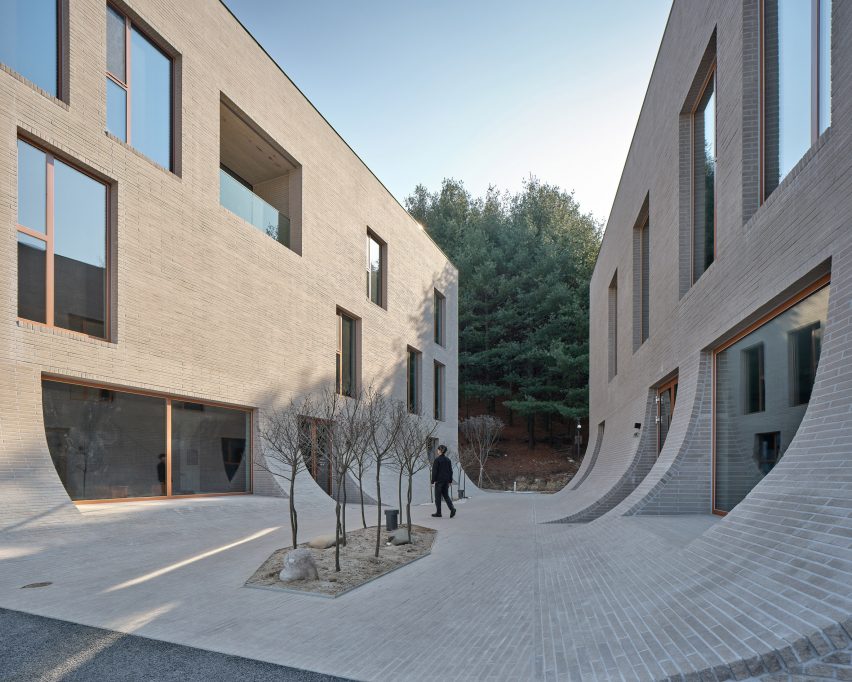
The two rectangular buildings were angled, creating an outdoor space that narrows towards the mountain path. The three-storey building contains a cafe and the two-storey building opposite is a bakery.
“The artificial valley, where the distinction between the wall and the floor is blurred, creates a flow towards the forest and becomes the yard to the cafe and a path for walkers,” Nameless Architecture co-principal Unchung Na told Dezeen.
“We intended the building to become a path and courtyard that guides the flow of nature and visitors rather than blocking the promenade.”
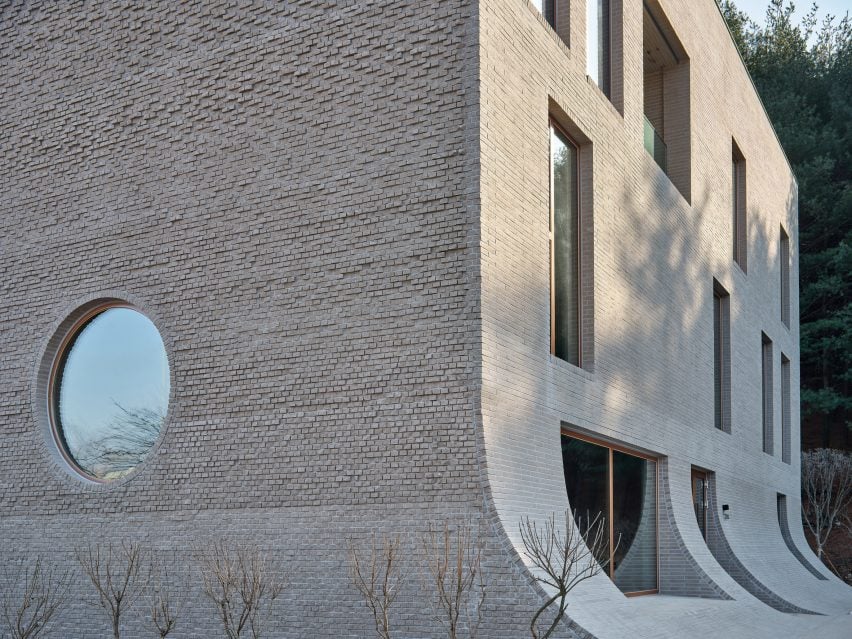
The 900-square-metre project was finished in concrete bricks, creating a rough texture on the exterior walls.
“The concrete bricks used to construct the architectural topography emphasise the continuity of the flowing space,” said Na.
“On the other hand, the facade wall made of rough broken bricks creates a difference of boundaries through the change of light, shadow, and time.”

The flowing exterior walls of the project are replicated inside the ground floor of a cafe, where the back wall of a double-height space curves down into stepped seating.
The floor, curved wall and stepped seating inside the cafe were finished in concrete bricks, and the remaining walls were finished in polished concrete.
“The fluid wall is continuous not only in the yard but also in the interior space, connecting the inside and outside scenery through a stepped space,” Na explained.
A backyard area features uplifted terrain that mimics the curved concrete brick walls of the cafe and bakery, which Nameless Architecture designed to provide a spatially interesting place for people to enjoy food outside.
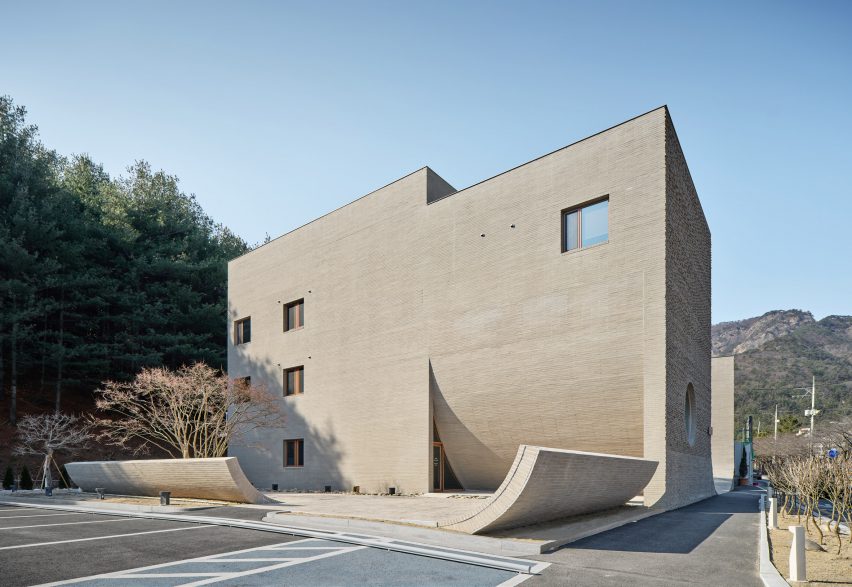
The architecture practice designed the curved elements that appear to emerge from the ground with the aim of blurring the lines between what is wall and floor.
“The basic elements of architecture can be reinterpreted to induce various experiences and actions of people,” said Na.
“In particular, the two elements, wall and floor, are defined as fundamentally different architectural elements, but we tried to reconsider this strict relationship.”
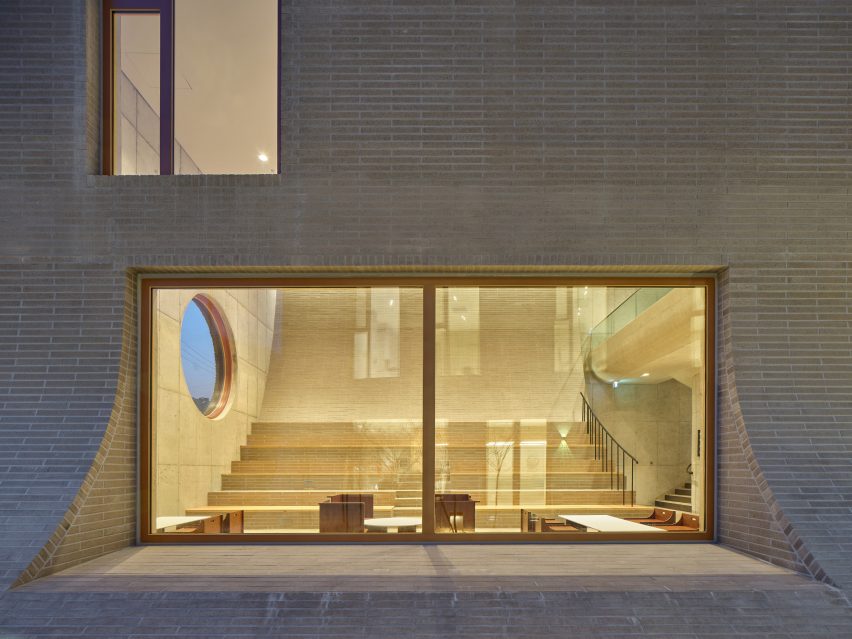
“The mutual relationship in which the wall becomes the floor, and the inside becomes the outside can be interpreted in various ways through the experience of the place,” Na continued.
Other projects recently completed in South Korea include a department store in Seoul with an indoor waterfall and skyscrapers with red-painted steel columns designed by Rogers Stirk Harbour + Partners.
The photography is by Kyung Roh.
Project credits:
Architect: Nameless Architecture
Principals-in-charge: Unchung Na and Sorae Yoo
Project team: Taekgyu Kang, Changsoo Lee and Jungho Lee

